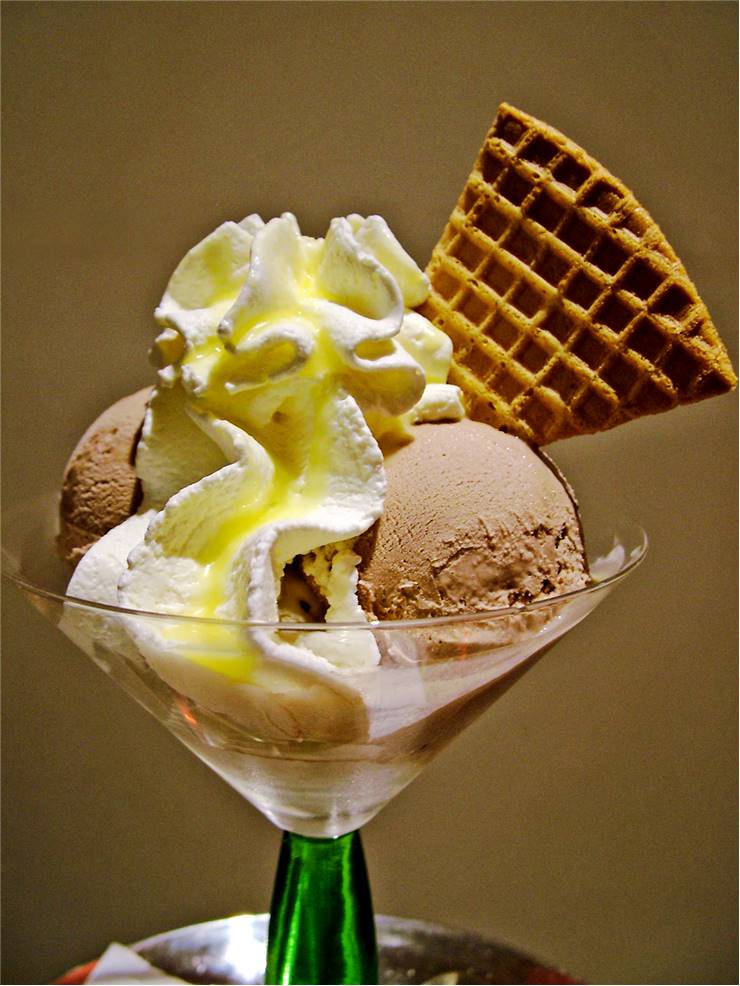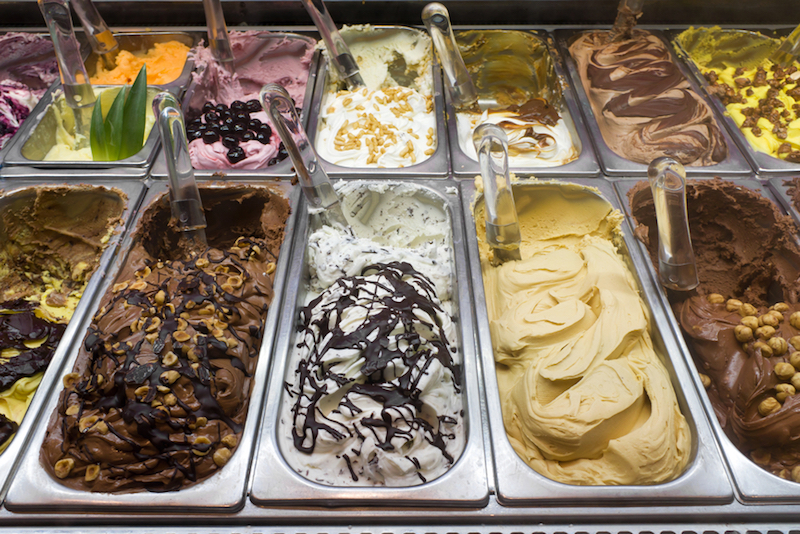Introduction

Ice cream is a beloved frozen dessert enjoyed by people all over the world. It has a rich and diverse history that spans centuries and continents. In this article, we will uncover the origins of ice cream and explore how it became the popular treat we know today. From its ancient beginnings as a simple frozen dessert to its evolution in different cultures and countries, ice cream has captivated the taste buds of people throughout time. So sit back, grab a spoon, and join us on this journey to discover the fascinating story of where ice cream originated.
Historical Background Of Ice Cream
Ice cream has a long and fascinating historical background. Its origins can be traced back to ancient times, with evidence of frozen desserts being enjoyed as early as biblical times. The ancient Chinese are often credited with creating the earliest form of ice cream, using a mixture of milk, rice, and snow. From China, the concept of frozen desserts spread to the Middle East, where the Arabs developed their own variations using ingredients like sugar and sweet flavors. In the Italian Renaissance, ice cream gained popularity in the courts, and it was during this time that the concept of gelato emerged. As ice cream made its way across Europe, it underwent further evolution, culminating in the invention of the ice cream cone. Finally, ice cream was introduced to America and became a beloved treat, inspiring American innovations and a wide range of popular flavors. The historical background of ice cream is rich and diverse, showcasing the ancient origins and cultural influences that have shaped this beloved frozen dessert.
Popularization And Evolution Of Ice Cream
As ice cream made its way from China to different parts of the world, it underwent a process of popularization and evolution. In the Italian Renaissance, ice cream gained popularity in the courts, becoming a favored delicacy among the nobility. The concept of gelato emerged during this time, providing a new and creamy twist to the frozen treat. As ice cream continued to spread across Europe, innovations such as the invention of the ice cream cone brought a new level of convenience to enjoying this delicious dessert. In America, ice cream became a beloved treat, inspiring a wide range of popular flavors and unique creations. Its popularity and evolution continue to thrive in the modern-day, captivating the taste buds of people worldwide.
Ancient Beginnings

The origins of ice cream can be traced back to ancient times when people discovered the joy of frozen desserts. In various cultures around the world, early forms of frozen treats were made using snow or ice mixed with honey, fruits, and other sweet ingredients. In China, around 3000 BC, the invention of a method to freeze mixtures of milk and rice led to the creation of what is considered the earliest version of ice cream. This ancient dessert paved the way for the delicious frozen treats that we enjoy today.
Early Forms Of Frozen Desserts
Early forms of frozen desserts can be traced back to ancient civilizations where people discovered the joy of combining snow or ice with sweet ingredients. Throughout history, various cultures have experimented with freezing mixtures of milk, fruit, honey, and other flavors to create delightful frozen treats. Persian records from the 2nd century BCE mention chilled sweetened drinks, while a Roman cookbook from the 1st century features recipes for desserts dusted with snow. These early creations set the foundation for the evolution of ice cream and the frozen desserts we enjoy today.
Chinese Origins Of Ice Cream
Chinese origins of ice cream can be traced back to ancient times. The Chinese are believed to have developed a method of combining snow or ice with sweet ingredients to create early forms of frozen desserts. These early creations were enjoyed by the nobility and emperors of China. The concept of freezing mixtures of milk, fruit, and other flavors gradually spread throughout the region. This innovation laid the foundation for the evolution of ice cream and the frozen desserts we enjoy today. It is fascinating to see how this ancient Chinese tradition has become a worldwide indulgence.
Arab Influence

During the Arab Empire, the influence of ice cream spread to the Middle East. It is believed that Arab traders acquired the knowledge of making ice cream from the Chinese and introduced it to the region. They further developed the concept by adding flavors such as rosewater, saffron, and pistachio. The popularity of ice cream grew rapidly in the Middle East, and it became a staple in the diets of the wealthy and royalty. The Arab influence also led to the development of sorbets and sherbets, which are refreshing fruit-based frozen desserts.
Introduction Of Ice Cream To The Middle East
Ice cream was introduced to the Middle East during the Arab Empire. Arab traders acquired the knowledge of making ice cream from the Chinese and brought it to the region. The Middle East further developed the concept of ice cream by adding flavors such as rosewater, saffron, and pistachio. It quickly gained popularity, particularly among the wealthy and royalty, and became a staple in their diets. Additionally, the Arab influence led to the creation of sorbets and sherbets, refreshing fruit-based frozen desserts. The Middle East played a significant role in shaping the history and flavors of ice cream.
Development Of Flavored Ice Creams
As ice cream continued to gain popularity across the Middle East, various flavors started to emerge, adding a new dimension to this frozen treat. The Middle Eastern region, renowned for its culinary innovation, experimented with different ingredients to create unique and exotic flavors. Rosewater, saffron, and pistachio became common flavorings, adding a touch of elegance and sophistication to the ice cream. These distinct flavors added depth and richness to the dessert, making it even more appealing to the palate. The development of flavored ice creams in the Middle East further solidified its reputation as a hub for culinary creativity and innovation.
Italian Renaissance

During the Italian Renaissance, ice cream reached new heights of popularity and creativity. The luxurious courts of Italy became centers of culinary innovation, and ice cream became a symbol of wealth and status. Italian courts would often compete with one another to create the most elaborate and extravagant ice cream desserts. The introduction of gelato, a rich and creamy frozen dessert, became a defining moment in the history of ice cream. Gelato, made with fresh ingredients and carefully crafted techniques, added a new level of sophistication to Italian ice cream. Today, gelato remains a beloved Italian dessert around the world.
Ice Cream In Italian Courts
During the Italian Renaissance, ice cream became a symbol of wealth and status in the luxurious courts of Italy. Italian courts, known for their culinary innovation, competed with one another to create the most extravagant ice cream desserts. These desserts showcased the creativity and finesse of Italian chefs, with each court striving to outdo the others. Ice cream became an integral part of the courtly feasts and banquets, adding a touch of indulgence and pleasure. Its popularity and presence in Italian courts contributed to the elevation of ice cream as a fashionable and sophisticated dessert.
Introduction Of Gelato
Gelato, the Italian word for ice cream, has its roots in the Italian Renaissance. It was during this time that gelato was introduced as a variation of traditional ice cream in Italian courts. Gelato is known for its rich and creamy texture, as well as its intense flavors. Unlike traditional ice cream, gelato has a lower fat content and is churned at a slower speed, resulting in a denser and smoother dessert. Gelato quickly gained popularity and became a symbol of Italian culinary excellence, captivating taste buds around the world.
European Expansion

During the European expansion in the 17th and 18th centuries, ice cream spread across the continent. It was introduced to France by Catherine de Medici, who later became the queen of France. The Italians, known for their culinary prowess, played a significant role in bringing ice cream to Europe. Italian chefs began serving ice cream to European royalty, further popularizing the dessert. As it gained popularity, different flavors and variations of ice cream emerged. One significant development during this time was the invention of the ice cream cone, which revolutionized the way people enjoyed this frozen treat.
Spread Of Ice Cream Across Europe
During the European expansion in the 17th and 18th centuries, ice cream spread across the continent. It was introduced to France by Catherine de Medici, who later became the queen of France. The Italians, known for their culinary prowess, played a significant role in bringing ice cream to Europe. Italian chefs began serving ice cream to European royalty, further popularizing the dessert. As it gained popularity, different flavors and variations of ice cream emerged. One significant development during this time was the invention of the ice cream cone, which revolutionized the way people enjoyed this frozen treat.
Invention Of The Ice Cream Cone
Invention of the ice cream cone:
The invention of the ice cream cone is credited to an Italian immigrant named Italo Marchiony. In 1896, Marchiony filed a patent for a mold that could shape waffle-like cones to hold ice cream. However, the history of the ice cream cone goes back even further. It is said that cones made from sweetened bread were already being used in England and Germany in the late 19th century. The combination of ice cream and a convenient, edible container revolutionized the way people enjoyed this frozen treat and made it even more popular.
America’s Love Affair With Ice Cream

America has had a long-standing love affair with ice cream. In the late 18th century, ice cream was introduced to America by European immigrants, and it quickly gained popularity. The first ice cream parlors opened in New York City and Philadelphia in the early 19th century, offering a wide variety of flavors. Ice cream became a staple dessert in American households, enjoyed by people of all ages. Over the years, American entrepreneurs and inventors made significant contributions to the ice cream industry, such as the invention of industrial ice cream making equipment and the creation of iconic American ice cream flavors like chocolate chip cookie dough and rocky road. Today, ice cream is deeply ingrained in American food culture, enjoyed in cones, sundaes, and floats across the country.
Introduction Of Ice Cream To America
Ice cream made its way to America in the late 18th century, brought by European immigrants who settled in the country. It quickly gained popularity and became a staple dessert in American households. The first ice cream parlors opened in New York City and Philadelphia in the early 19th century, offering a wide variety of flavors to satisfy people’s sweet cravings. Ice cream became an instant hit among Americans of all ages, and its popularity only continued to grow over the years. Today, ice cream remains deeply ingrained in American food culture, enjoyed in various forms across the country.
American Innovations And Popular Flavors
American innovations in the ice cream industry have paved the way for new and exciting flavors. In the early 20th century, the invention of the ice cream scoop revolutionized the serving process. Another innovation, the ice cream soda, gained popularity, with various flavors and toppings added to create decadent treats. In the 1980s, “mix-ins” like chocolate chips and cookie dough became a hit, thanks to the creation of machines that could blend them into the ice cream. Today, popular American flavors include classics like chocolate and vanilla, alongside inventive options like cookies and cream, mint chocolate chip, and strawberry.
Frequently Asked Questions: Where Did Ice Cream Originate?
Q: Where did ice cream originate?
A: Ice cream was first invented in ancient China during the Tang Dynasty (618-907 AD). However, it is believed that similar frozen treats were also enjoyed by other ancient civilizations, such as the Persians, Arabs, and Romans.
Q: Who invented ice cream?
A: While the exact person who invented ice cream is not known, it is widely believed that the Chinese were the first to make a dairy-based dessert that resembled ice cream. They would mix buffalo milk, ice, and flavorings to create a frozen treat.
Q: How did ice cream spread to other countries?
A: From China, the concept of ice cream spread to the Arab world during the 7th century, thanks to trade routes. The Arabs further developed this frozen delicacy by adding flavors like rosewater and dried fruits. From there, it made its way to Europe via Sicily, where it gained popularity among the nobility.
Q: When did ice cream become popular in Europe?
A: Ice cream gained popularity in Europe during the 17th and 18th centuries. Italian and French chefs perfected the ice cream-making techniques and introduced more flavors. The elite classes enjoyed this icy creation, and eventually, it trickled down to the middle classes.
Q: When did ice cream arrive in America?
A: Ice cream arrived in America during the 18th century. It is believed that the first ice cream shop in America was opened by a Scottish colonist in 1776 in New York City. Ice cream quickly became a popular treat in America, especially during summertime.
Q: How has ice cream evolved over time?
A: Ice cream has come a long way since its humble beginnings. From the basic dairy-based mixture, it has evolved to include a vast assortment of flavors, mix-ins, and even vegan options. Today, there are countless variations of ice cream, including gelato, sorbet, and frozen yogurt.
Q: Is ice cream considered a global treat?
A: Yes, ice cream is now widely enjoyed all around the world. Each country has its own unique take on this frozen treat. From Italian gelato to Turkish dondurma and Indian kulfi, ice cream has become an integral part of many cultures, loved by people of all ages.
Q: What are some popular ice cream flavors from around the world?
A: Different countries have their signature ice cream flavors. For example, Italy is known for its classic flavors such as pistachio, stracciatella, and hazelnut; Japan is famous for its green tea and red bean ice cream; while the United States is renowned for flavors like chocolate chip cookie dough and cookies and cream.
Q: How is ice cream enjoyed today?
A: Ice cream is enjoyed in various ways worldwide. It can be served in cones, bowls, or cups, as well as in desserts like sundaes and milkshakes. Ice cream parlors and shops are popular places to savor this frozen delight, and it is also commonly enjoyed at home or during special occasions.
Q: Can you make ice cream at home?
A: Yes, making ice cream at home is quite popular. There are numerous recipes available, and home ice cream makers have made the process more accessible. With the right ingredients and equipment, it is possible to create a wide range of homemade ice cream flavors to suit individual tastes.

Soo Good Snack Bar is an upscale snack shop located at 1309 Hermosa Ave. in Hermosa Beach, CA. This family-owned business is the newest addition to the community of Hermosa, and our goal is to create a fun and inviting place where families can enjoy delicious snack foods that fit the beach lifestyle. Check us out today and help yourself to happiness.
